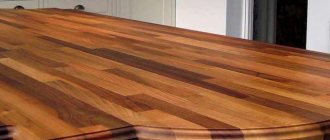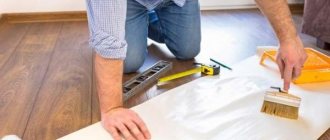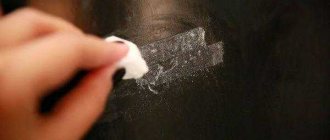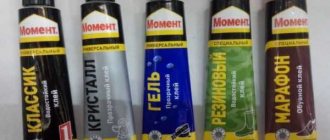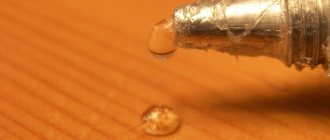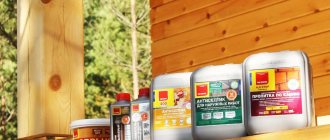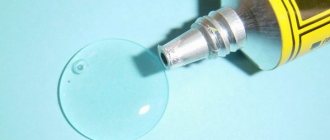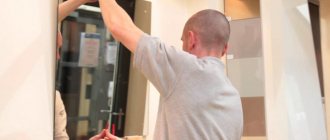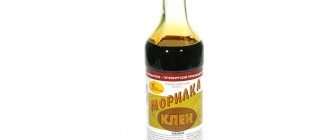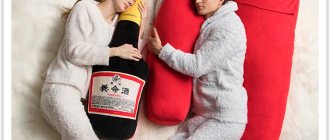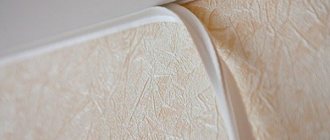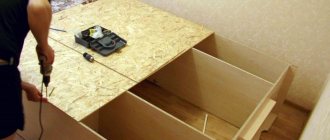Features of PVA-based putty
PVA putty is produced in accordance with GOST 520-20 from 2003. This product is based on polyvinyl acetate, which acts as a binder and is part of the glue of the same name. PVA is environmentally friendly and provides a high degree of adhesion to various substrates. Since polyvinyl acetate is easily diluted with water and is suitable for many construction works, the putty is considered universal and multifunctional.
Composition and technical characteristics
In addition to PVA, the putty also contains other components. Chalk is used as a filler, and some manufacturers also add talc to the product, since it has the finest fraction and helps to give the mass evenness without bubbles and potholes. Other components of the putty are:
- carboxymethylcellulose (CMC) and other plasticizers - to increase softness, reduce the effort required to grind treated surfaces,
- latex - to prevent cracking of the putty layer after drying and during the entire service life,
- antiseptics and special additives - to protect surfaces from fungus, mold, prevent insect infestation,
- drying oil - to give the solution elasticity and for more convenient application,
- emulsifiers and preservatives - to prevent deterioration of the composition and increase shelf life.
Typically, PVA putty is sold ready-made, since only in a diluted form it meets the requirements of GOST, and when diluted independently it can acquire other technical parameters. Dry building mixtures based on PVA are often sold in large volumes and used in industry.
The product characteristics are:
- high adhesive force (up to 450 N/m),
- guaranteed adhesion to basic building materials,
- no shrinkage, detachment, cracking,
- ensuring a smooth surface,
- ease of application,
- non-toxic, completely safe for humans,
- high drying speed - up to a day.
Composition and characteristics
From the very name of the product it is clear that PVA putty contains polyvinyl acetate-based adhesive, which was invented by English chemists about seventy years ago and is a transparent, non-toxic, chemically inert polymer without taste or odor.
In nineteen fifty-one, British scientists discovered that the polymerization of vinyl acetate in a toluene solution in the presence of a catalyst produces a substance similar in properties to natural resins, but at the same time even more plastic and swelling in water.
It turned out that this substance mixes well with various plasticizers, does not dissolve in water, but forms stable homogeneous suspensions with it and is a film-forming and adhesive material.
This prompted the inventors to create the well-known glue, which in liquid form has a white or slightly yellowish color due to the addition of the plasticizer dibutyl phthalate. The glue has a barely noticeable specific, rather pleasant, aroma, and after drying it forms a transparent, hard, but rather elastic glassy layer without color or odor.
This glue is so environmentally friendly and non-toxic that it is used to glue food packaging together, and PVA-based putties are recommended for use in finishing rooms intended for children.
PVA-based putties are recommended for use in finishing rooms intended for children.
In addition to polyvinyl acetate glue, they contain the following components:
- Chalk is calcium carbonate, chemically precipitated from minerals containing calcium. Gives the putty a pure, opaque white color;
- Ground talc is a mineral that reduces the crystallization time of polymers, therefore promoting faster drying;
- Latex is the stabilized milky sap of rubber plants. Additive to prevent cracking of the putty layer;
- Carboxymethylcellulose is a product of cellulose processing. Gives additional softness;
- Antiseptics and antifungal components. Prevents mold and bacterial growth.
The finished putty composition contains exclusively harmless ingredients, each of which has found its application in medicine, perfumery and the food industry.
The finished putty composition contains exclusively harmless ingredients.
This type of putty is different:
- High adhesion, that is, the ability to have very strong adhesion to other surfaces and increase friction. This characteristic is stronger, the more intense the intermolecular interaction of the glued layers;
- Optimal density and viscosity and good ductility, which greatly facilitates the application process;
- Economical consumption. It ranges from 0.4 to 0.8 kg per square meter;
- Neutral white color. Therefore, the composition is ideal as a ceiling leveling material and creates an excellent basis for painting the treated surface in any color;
- Relatively short hardening time. One layer takes three hours to dry; a day is enough for all layers to dry completely.
The mixture is resistant to temperature fluctuations, withstands a temperature range from forty to one hundred and twenty degrees and a three-time cycle of freezing and thawing without changing its properties.
The composition is ideal as a ceiling leveling material.
Purpose and scope
Typically, PVA putty is used for finishing bases made of concrete, brick, wood, foam blocks, cinder blocks and other popular building materials. The product is suitable for treating previously plastered bases or walls covered with a basic building mixture. After puttying with a PVA-based product, the following can be applied to the surface:
- water-based paint,
- latex paint,
- lime whitewash,
- oil paints and emulsions,
- adhesive compositions.
PVA putty is considered the most suitable for interior work in rooms with low and medium humidity. It is not suitable for the bathroom, kitchen and other rooms where the humidity level is too high.
Putty
Putty
(special:
putty
[1] [2]; from German
Spachtel
-
spatula
) - a paste or powder material used to level surfaces before applying materials for interior decoration [3]. Putties are compounds used to level surfaces that are to be painted. Putties come in different types. To prepare them, laundry soap, chalk, flour glue, carpentry glue, animal glue, varnishes, sifted gypsum, and drying oils are used.
Content
- 1 Types of putties
- 2 Composition
- 3 Application
- 4 Notes
- 5 Literature
Types of putties [ edit | edit code]
- Oil putty
contains natural drying oil, driers, and chalk. This putty dries slowly, but has increased strength. It is used in the preparation of floors, window sills, window frames, external doors and other surfaces where moisture may be present. Oil putty is intended for surfaces that require leveling before painting with water-dispersion paints, oil paints and enamels. Has high adhesion rates. Used indoors in dry and damp areas. - The adhesive putty
contains a 10% glue solution, drying oil, and chalk. Thanks to drying oil, the putty is durable and easy to apply to the surface. - Oil-adhesive putty
contains acrylates, drying oil, water, plasticizers, and additives. It is used for leveling defects in ceilings and walls made of concrete, wood and plastered surfaces, which will then be painted or wallpapered. Oil-adhesive putty is intended for interior work. - Gypsum putty
- Epoxy putty
- Polyester putty
- Latex putty
contains calcite filler, acrylate, plasticizers, water, and additives. The application is similar to oil-adhesive putty. For interior work only. - Putty
is a putty used for sealing baseboards and leveling plastered surfaces. It can also be used for gluing ceramic tiles in dry rooms. When diluted with water, it is suitable for whitewashing walls and ceilings with a brush. - Universal acrylic putty
is made from chemical raw materials using modern technologies. Environmentally safe. Combines the properties of leveling compounds and at the same time has a dense, fine-grained structure. Easy to sand with sandpaper. After drying, it does not shrink or crack. High-quality material and excellent for use at home, especially when there is no time to select a separate putty for each material. Used for interior work. Levels plastered, plasterboard, concrete, wooden surfaces, and is also used to repair damaged plaster. Can be applied in either a thick or thin layer. - Facade acrylic putty
is resistant to moisture and atmosphere. It is used for external work on plaster, concrete, wood. Has excellent filling and leveling properties. It does not drag on the spatula, does not crack, and has increased strength. Dries quickly and sands easily. Characterized by high plasticity, facade putty is resistant to abrasion. Almost odorless. Environmentally friendly product. - PVA based putty
. It is used for leveling concrete, asbestos-cement, plastered and plasterboard surfaces, as well as for sealing cracks and joints, cracks and during preliminary work for painting and wallpapering. This putty contains a large number of antiseptic additives that prevent the appearance of mold and fungi. It has optimal viscosity and is conveniently applied to the surface. After drying it is easy to sand.
Composition [edit | edit code ]
Putties contain film-forming substances, fillers (chalk, talc, barite) and pigments (zinc white, ocher). The film-forming agent content is 5-12 times higher than the content of pigments and fillers. There are several different types of putty: varnish, oil, adhesive, gypsum putty, which are based on varnish, drying oil, natural adhesives, and gypsum, respectively.
Advantages and disadvantages
The product has a lot of advantages, which is why it is very popular among professionals and beginners in repair work. The material has a natural composition, which includes natural components and harmless synthetic additives. During drying and during use, the putty does not emit any odor, so it can even be used in children's rooms, gardens and hospitals.
After puttying, the walls will be resistant to the development of fungus and the colonization of microorganisms. As the putty is applied, the surface becomes snow-white, neutral in tone to any type of subsequent finishing - it can be painted even with the lightest paints. Other advantages of PVA-based material:
- low consumption (up to 0.5-1 kg/square meter),
- low price,
- evenness, perfect smoothness of the dried layer,
- ease of use and quick drying,
- resistance to temperature fluctuations,
- long shelf life,
- strength and non-shrinkage.
PVA putty also has its disadvantages. It is highly hygroscopic, therefore it is absolutely not suitable for wet rooms and outdoor work. Manufacturers also do not recommend applying the material under ceramic tiles and for leveling walls with large differences - for this purpose it is necessary to use more durable cement-based compounds.
What kind of PVA can be added to putty?
PVA is a group of compounds with polyvinyl acetate as the main substance. However, it may contain other impurities. Thus, stationery PVA-K contains a large amount of starch and a reduced content of polyvinyl acetate. PVA-M is intended for paper and wood, it is also less effective. Only two compositions can be added to the putty:
- PVA-MB is a universal option, which contains enough polyvinyl acetate and no other impurities. It has a yellow color and a homogeneous mass.
- Dispersed base is the best option for putty. It is a thick mixture of yellowish color with excellent properties.
PVA glue helps make putty better quality
The latter composition is frost-resistant only in its unplasticized form, so the dispersion is not suitable for external use.
Choosing putty for walls
You can buy PVA-based putty at any hardware store. It is sold in different packaging: cans of 0.5 and 3 kg, buckets of 10–15 kg, so you can roughly calculate the consumption and buy the right amount of product. You should not take the material that is sold in street kiosks during the cold season - after freezing the composition becomes inapplicable! Also, when purchasing, it is important to pay attention to the expiration date: it must be normal. It is better to give preference to a well-known brand, even if the price of the product is higher.
Manufacturers of putties
Among the variety of ready-made putty mixtures, those produced by popular brands and the most popular among craftsmen stand out.
Cork-S
This company occupies a leading position in the building mixtures market in the Russian Federation. It produces several lines of various putties, including those based on PVA. Such products can be used both for treating large areas and for repairing cracks, chips, and individual defects. PVA putty of this brand is sold in buckets of 3 and 15 kg.
"Areal+"
The company produces putties in Russia based on high quality foreign raw materials. PVA mixtures provide a perfectly smooth surface, have a snow-white color, are completely odorless and have a high degree of plasticity. They are packaged in cans of 1.5, 3, 15 kg, and are also presented on the market in dry form in industrial packaging.
"Diola"
Another large manufacturer of building mixtures, using only high-quality imported raw materials. This brand of polyvinyl acetate-based putty is used for finishing ceilings and walls, including before wallpapering and painting.
Self-production of material
If desired, you can easily make the putty mixture yourself. All components for it are sold in construction and hardware stores. You will need:
- PVA (glue) - 1 part,
- chalk (talc, baby powder, sawdust dust, dry gypsum plaster - to choose from) - 2.5 parts,
- plasticizer (dry wallpaper glue or glycerin, drying oil) - 0.05 parts.
As a plasticizer, some introduce casein glue, liquid or grated laundry soap, but with drying oil the smoothness of the composition is the highest. The addition of this component cannot be ignored, otherwise working with putty will be labor-intensive. First, the dry ingredients are mixed together, then they are diluted with PVA, after which other liquid ingredients are added to the mass.
You need to make sure that the homemade putty resembles thick sour cream, since a too liquid product will go on unevenly, with sagging. Sawdust is added if the mass is planned to be used to seal cracks, and for finishing puttying of walls it is better to add white components to the composition.
Mode of application
PVA putty is applied over the base plaster. It is not applied as a thick leveling layer - only gypsum and cement products are suitable for this. It is advisable to carry out work at a temperature of +20…+30 degrees.
Preparing the base
The better the wall or ceiling is prepared, the less material is consumed and the more even the surface is. Usually the bases are leveled with base plasters, removing all significant defects and differences. Next, the walls are cleaned of dirt, dust and primed. If required, degrease with solvents (usually for substrates that have not been plastered).
You cannot ignore priming the walls and ceiling - this stage helps to increase the adhesion between the putty and the plaster, and increase the service life of the finished coating. The primer is applied with a brush or roller in 2–3 layers. Each subsequent layer is performed only after the previous one has dried.
Applying putty
In addition to the PVA plaster itself, polyurethane grout and primer, the following equipment will be required for work:
- two spatulas - wide and narrow,
- mounting gun and sealant (if you need to seal deep cracks),
- masking tape,
- polyethylene film.
When working with finishing plaster, only clean spatulas can be used - even a small piece of dried material will leave stripes and dents on the wall. Before applying the putty, cover the floor and cover doors and window openings with masking tape. Deep cracks are widened, cleaned out with the sharp end of a spatula, and then sealed with sealant.
The PVA mixture is thoroughly mixed to prevent separation of the components. First, spread the mass over a wide spatula using a narrow spatula, after which the composition is applied to the surface with sweeping movements. The layer thickness should be up to 0.5-1 mm, no more. After drying (after 2–3 hours), treat the walls and ceiling with polyurethane grout, and then after 24 hours with a primer. The surface will be completely dry in another day, and then you can glue wallpaper on it or paint it according to the user’s idea.
Primer made from PVA glue - save on repairs
For any type of wall finishing, be it putty, plaster, painting, or before wallpapering, you must first prepare the surface. Priming is one of the main stages that must be completed first, because with the help of primer you can achieve better adhesion of the finishing material to the surface. However, the materials presented on the construction market are quite expensive. But there is an excellent economical solution - PVA primer. It is not difficult to make it yourself, and this solution is suitable for both wooden and concrete and brick surfaces.
Purpose of the primer
PVA glue is a water emulsion of polyvinyl acetate. This is a chemical substance of a solid granular substance without a distinct color or odor. The material is used in construction, furniture production, and carpentry. It is actively used by schoolchildren, students, and needlewomen. Polyvinyl acetate glue connects various materials: paper, cardboard, wood, rubber, ceramics.
To obtain a primer, PVA glue is diluted with water. On the surface, such a mixture forms a thin transparent film, which has many of the properties of specialized primers.
A PVA-based primer can be used as an intermediate layer between the surface and the finishing coating, promoting good adhesion of materials and reducing the risk of them peeling off the wall as a result of moisture getting on it. In addition, the use of such a primer will reduce the consumption of putty or paint used.
Advantages and disadvantages
A primer made from PVA glue has its advantages and disadvantages. The undoubted advantages are:
- Increased adhesion. An additional layer is created to securely fix the finish to the surface.
- Reduced moisture absorption. The soil penetrates the surface structure, filling its pores and preventing moisture from entering them.
- Creation of a protective layer. A thin polymer barrier helps combat aggressive environmental influences.
- Reducing the amount of consumables (plaster, paint, glue).
In addition, a primer made from PVA ensures even application of paint and facilitates the process of wallpapering. Of course, all this is sufficiently ensured by commercial primer, which is available in a wide range. But often its high price forces us to look for more profitable solutions. Therefore, using PVA instead of a primer is a completely justified option.
Despite all the advantages, this composition still has disadvantages. These include:
- Ineffectiveness – insufficient penetration into the depth of the material.
- Lack of antiseptic properties - the primer coating will not be able to resist the proliferation of microorganisms (mold, fungus).
- The formation of yellow spots and stains spoils the appearance of the finish.
- The material loses its properties in damp rooms - it is not used to cover walls, ceilings in bathhouses, swimming pools.
Knowing some subtleties, you can turn disadvantages into advantages and improve the properties of an aqueous PVA solution for priming walls. So, for example, you can increase the ability to resist mold by adding a little whiteness to the composition in the proportion: 50 g of disinfectant per liter of ready solution. If you add 3% of its volume of liquid glass to PVA soil, you can increase the permeability of the material being processed, especially wooden bases.
If financial resources are limited, it is better to use adhesive primer in utility or non-residential premises. In the living room and bedroom, combination with expensive wallpaper such a primer will not work, because there is a possibility of yellowing, which will significantly change the interior for the worse.
Prepare the primer yourself
How to make a mixture that has the properties of a primer? You need to take the following components:
- PVA glue – 1 part;
- water – 2 parts;
- cement - the amount is determined by the density.
